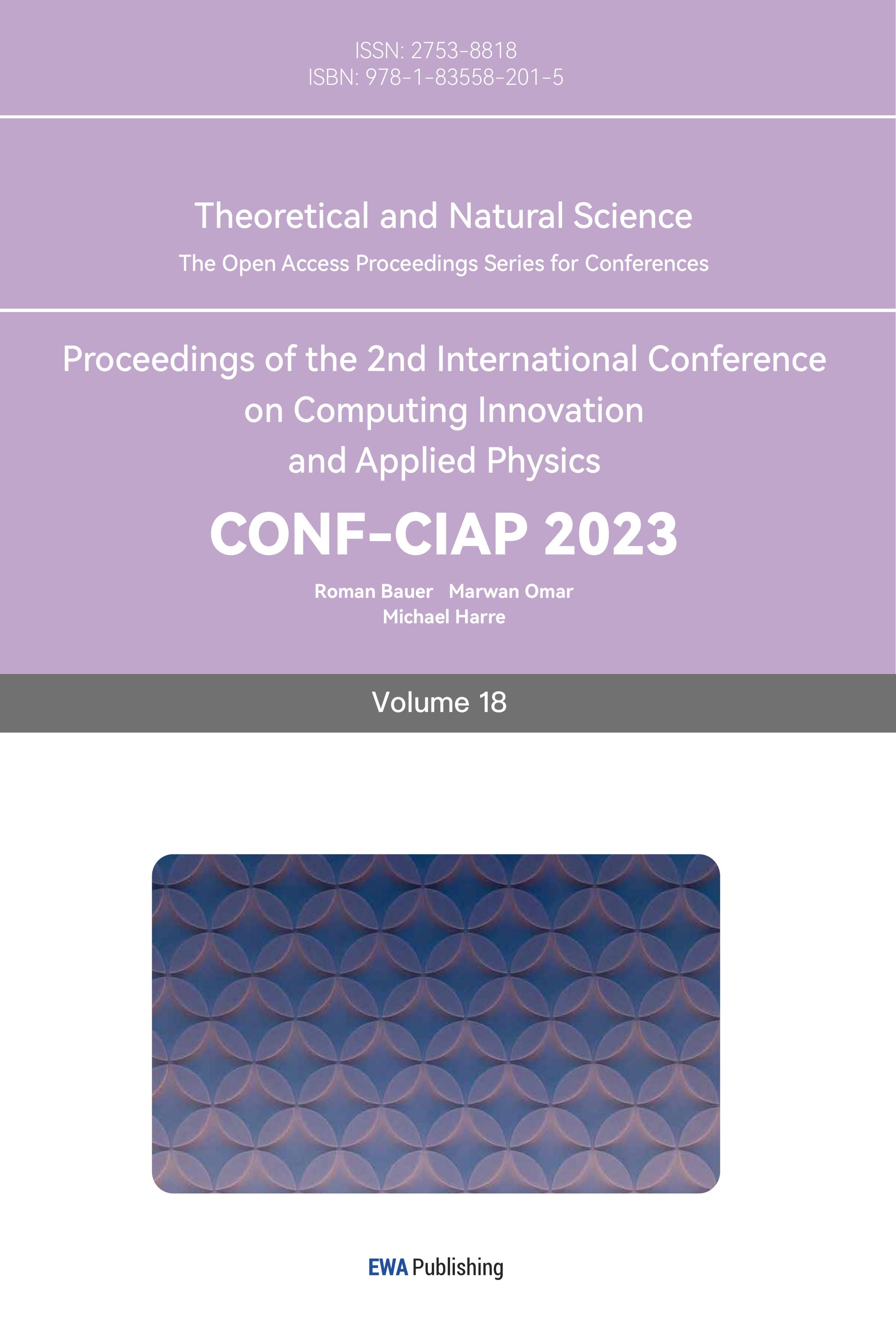References
[1]. Sun, Jinhu Li, Peng Wu, Xiaojun, Handwritten Ancient Chinese Character Recognition Algorithm Based on Improved Inception-ResNet and Attention Mechanism, 2nd IEEE International Conference on Software Engineering and Artificial Intelligence, SEAI 2022, 2022
[2]. Huang, Zetao Zhang, Qian ,Skew correction of handwritten Chinese character based on resnet, 2019 International Conference on High Performance Big Data and Intelligent Systems, HPBD and IS 2019, 2019
[3]. Patnaik, Suprava Kumari, Saloni Das Mahapatra, Shreya , Comparison of deep CNN and ResNet for Handwritten Devanagari Character Recognition, 1st IEEE International Conference for Convergence in Engineering, ICCE 2020, KIIT and School of Electronics Bhubaneswar India, 2020
[4]. Khan, Riaz Ullah Zhang, Xiaosong Kumar, Rajesh , Analysis of ResNet and GoogleNet models for malware detection, JOURNAL IN COMPUTER VIROLOGY, Volume 15, Issue 1,2019, p29-p37
[5]. Lu, Huimin Yang, Rui Deng, Zhenrong Zhang, Yonglin Gao, Guangwei Lan, Rushi, Chinese Image Captioning via Fuzzy Attention-based DenseNet-BiLSTM, ACM TRANSACTIONS ON MULTIMEDIA COMPUTING, COMMUNICATIONS AND APPLICATIONS, Volume 17, Number 1, 2021, p1-p18
[6]. Jalali, Amin Lee, Minho , High cursive traditional Asian character recognition using integrated adaptive constraints in ensemble of DenseNet and Inception models, PATTERN RECOGNITION LETTERS, Volume 131, as of 2020, p172-p177
[7]. Miao, Jun Xu, Shaowu Zou, Baixian Qiao, Yuanhua ResNet based on feature-inspired gating strategy,MULTIMEDIA TOOLS AND APPLICATIONS,Volume 81,Issue 14,2022, p19283-p19300
[8]. Kaiming He, Xiangyu Zhang, Shaoqing Ren, Jian Sun,Deep Residual Learning for Image Recognition, 10 Dec 2015 , arXiv:1512.03385
[9]. Yu, Dawei Yang, Jie Zhang, Yun Yu, Shujuan Additive DenseNet: Dense connections based on simple addition operations, JOURNAL OF INTELLIGENT AND FUZZY SYSTEMS, Volume 40, Issue 3, 2021, p5015-p5025
[10]. Gao Huang, Zhuang Liu, Laurens van der Maaten, Kilian Q. Weinberger ,Densely Connected Convolutional Networks, 25 Aug 2016, arXiv:1608.06993
Cite this article
Dai,R. (2023). Network architecture exploration for Chinese character recognition with densenet. Theoretical and Natural Science,18,308-314.
Data availability
The datasets used and/or analyzed during the current study will be available from the authors upon reasonable request.
Disclaimer/Publisher's Note
The statements, opinions and data contained in all publications are solely those of the individual author(s) and contributor(s) and not of EWA Publishing and/or the editor(s). EWA Publishing and/or the editor(s) disclaim responsibility for any injury to people or property resulting from any ideas, methods, instructions or products referred to in the content.
About volume
Volume title: Proceedings of the 2nd International Conference on Computing Innovation and Applied Physics
© 2024 by the author(s). Licensee EWA Publishing, Oxford, UK. This article is an open access article distributed under the terms and
conditions of the Creative Commons Attribution (CC BY) license. Authors who
publish this series agree to the following terms:
1. Authors retain copyright and grant the series right of first publication with the work simultaneously licensed under a Creative Commons
Attribution License that allows others to share the work with an acknowledgment of the work's authorship and initial publication in this
series.
2. Authors are able to enter into separate, additional contractual arrangements for the non-exclusive distribution of the series's published
version of the work (e.g., post it to an institutional repository or publish it in a book), with an acknowledgment of its initial
publication in this series.
3. Authors are permitted and encouraged to post their work online (e.g., in institutional repositories or on their website) prior to and
during the submission process, as it can lead to productive exchanges, as well as earlier and greater citation of published work (See
Open access policy for details).
References
[1]. Sun, Jinhu Li, Peng Wu, Xiaojun, Handwritten Ancient Chinese Character Recognition Algorithm Based on Improved Inception-ResNet and Attention Mechanism, 2nd IEEE International Conference on Software Engineering and Artificial Intelligence, SEAI 2022, 2022
[2]. Huang, Zetao Zhang, Qian ,Skew correction of handwritten Chinese character based on resnet, 2019 International Conference on High Performance Big Data and Intelligent Systems, HPBD and IS 2019, 2019
[3]. Patnaik, Suprava Kumari, Saloni Das Mahapatra, Shreya , Comparison of deep CNN and ResNet for Handwritten Devanagari Character Recognition, 1st IEEE International Conference for Convergence in Engineering, ICCE 2020, KIIT and School of Electronics Bhubaneswar India, 2020
[4]. Khan, Riaz Ullah Zhang, Xiaosong Kumar, Rajesh , Analysis of ResNet and GoogleNet models for malware detection, JOURNAL IN COMPUTER VIROLOGY, Volume 15, Issue 1,2019, p29-p37
[5]. Lu, Huimin Yang, Rui Deng, Zhenrong Zhang, Yonglin Gao, Guangwei Lan, Rushi, Chinese Image Captioning via Fuzzy Attention-based DenseNet-BiLSTM, ACM TRANSACTIONS ON MULTIMEDIA COMPUTING, COMMUNICATIONS AND APPLICATIONS, Volume 17, Number 1, 2021, p1-p18
[6]. Jalali, Amin Lee, Minho , High cursive traditional Asian character recognition using integrated adaptive constraints in ensemble of DenseNet and Inception models, PATTERN RECOGNITION LETTERS, Volume 131, as of 2020, p172-p177
[7]. Miao, Jun Xu, Shaowu Zou, Baixian Qiao, Yuanhua ResNet based on feature-inspired gating strategy,MULTIMEDIA TOOLS AND APPLICATIONS,Volume 81,Issue 14,2022, p19283-p19300
[8]. Kaiming He, Xiangyu Zhang, Shaoqing Ren, Jian Sun,Deep Residual Learning for Image Recognition, 10 Dec 2015 , arXiv:1512.03385
[9]. Yu, Dawei Yang, Jie Zhang, Yun Yu, Shujuan Additive DenseNet: Dense connections based on simple addition operations, JOURNAL OF INTELLIGENT AND FUZZY SYSTEMS, Volume 40, Issue 3, 2021, p5015-p5025
[10]. Gao Huang, Zhuang Liu, Laurens van der Maaten, Kilian Q. Weinberger ,Densely Connected Convolutional Networks, 25 Aug 2016, arXiv:1608.06993









